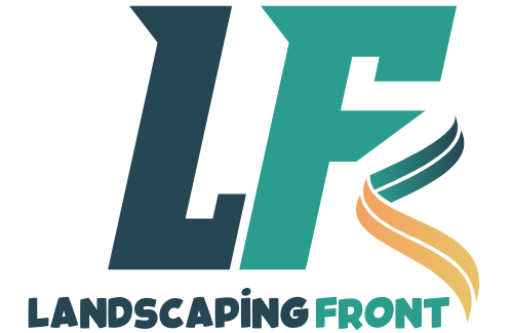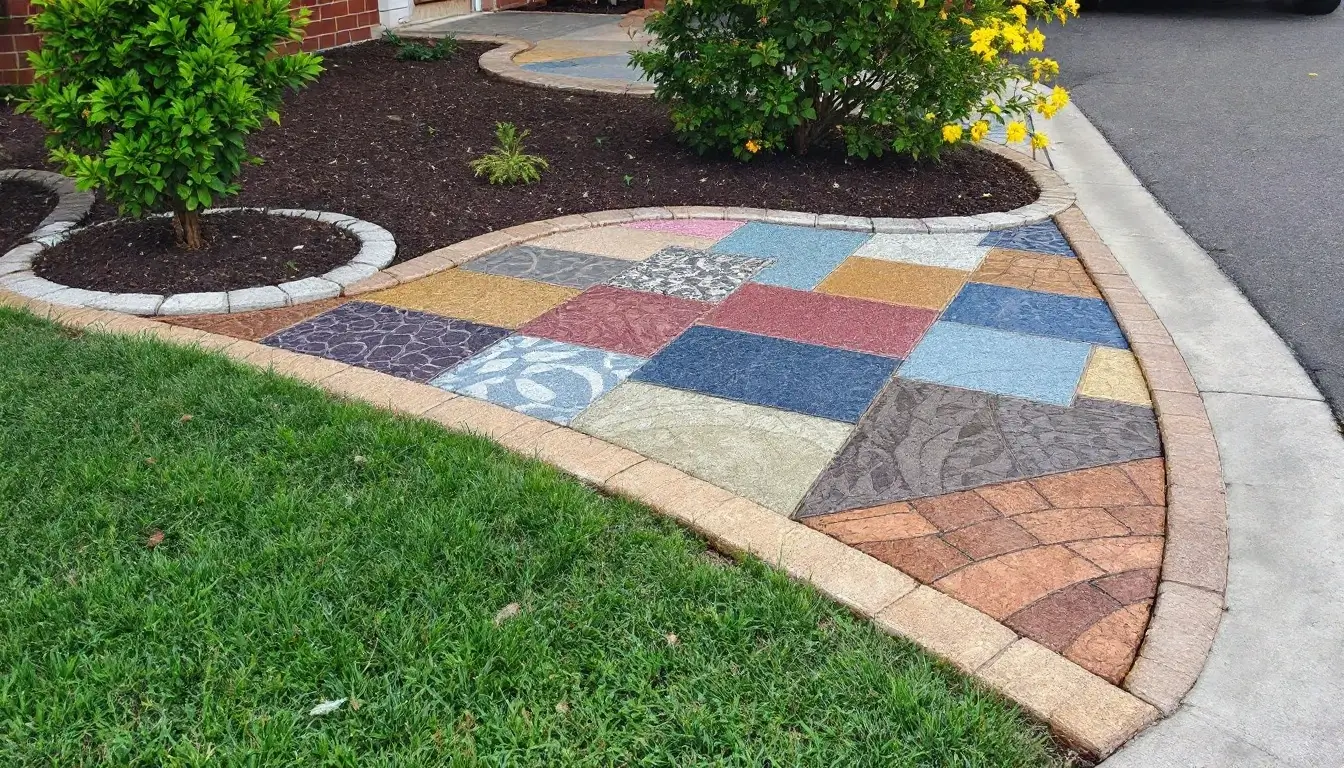Concrete curbing is a versatile and stylish solution for enhancing outdoor spaces, offering both functionality and aesthetic appeal. As a durable edging material, it helps define garden beds, pathways, and driveways while adding a polished look to your landscape. Whether you’re aiming to boost curb appeal or create clear boundaries for your yard, concrete curbing is a low-maintenance and cost-effective option. This comprehensive guide explores everything you need to know about concrete curbing, from its benefits and design options to installation tips and maintenance strategies, ensuring your outdoor spaces stand out beautifully and function efficiently.

1. What Is Concrete Curbing and Why Is It Popular?
a. Definition and Purpose of Concrete Curbing in Landscaping
Concrete curbing refers to the process of creating durable, continuous borders using poured concrete to define outdoor spaces like gardens, pathways, and driveways. This edging solution offers a clean, professional look that complements various landscape designs. Its purpose goes beyond aesthetics, as it also serves to contain soil, mulch, or gravel and prevent them from spilling into unwanted areas.
b. Key Reasons for Its Growing Popularity Among Homeowners and Landscapers
Concrete curbing has become increasingly popular due to its versatility and long-lasting nature. Homeowners appreciate its ability to enhance curb appeal, while landscapers value its practicality for organizing outdoor areas. Unlike traditional edging materials like plastic or wood, concrete curbing withstands weather extremes and requires minimal upkeep.
c. How Concrete Curbing Improves Curb Appeal and Property Value
One of the primary reasons homeowners choose concrete curbing is its ability to elevate the visual appeal of their property. With customizable designs, colors, and textures, concrete curbing can seamlessly blend with the overall landscaping theme. Its sleek appearance not only adds beauty but can also increase property value by making outdoor spaces look well-maintained and thoughtfully designed.
d. Common Applications of Concrete Curbing in Residential and Commercial Landscapes
Concrete curbing is widely used in both residential and commercial landscapes due to its adaptability. Common applications include:
- Garden Edging: Creating defined borders around flower beds and shrubs.
- Driveway Borders: Preventing cars from driving over lawn areas while enhancing the driveway’s appearance.
- Pathway Edging: Adding structure and visual interest to walking paths.
- Playground or Pool Areas: Offering safety and clear delineation in high-traffic zones.
Concrete curbing’s popularity continues to rise as more people recognize its aesthetic and practical benefits. Whether for a small yard or a large commercial space, it’s a timeless choice that delivers long-term value.
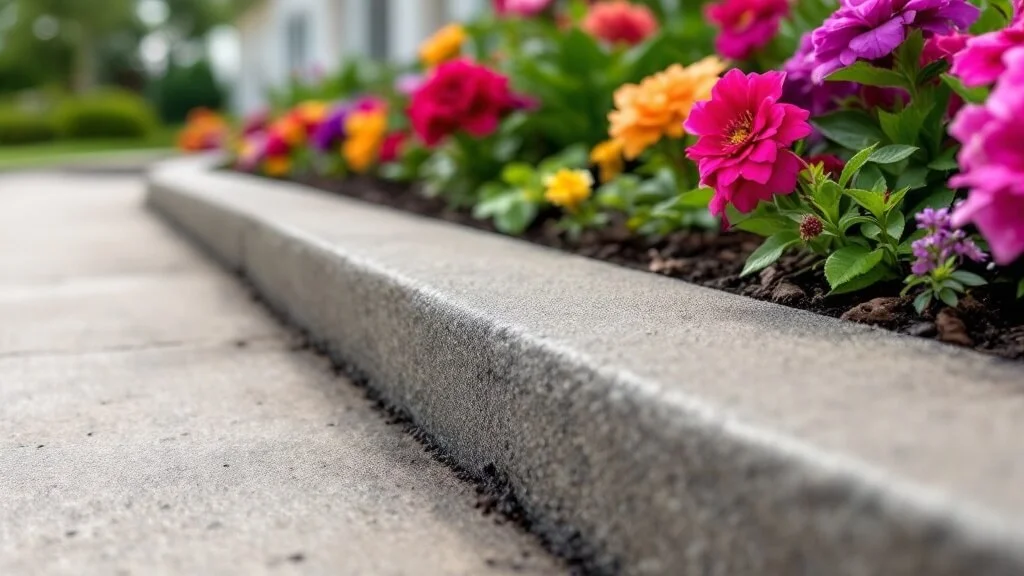
2. Benefits of Concrete Curbing for Outdoor Spaces
a. Durability and Resistance to Weather and Wear
Concrete curbing is renowned for its durability, making it an ideal choice for outdoor spaces exposed to harsh weather conditions. Unlike materials such as wood or plastic, concrete can withstand heavy rain, intense sunlight, and freezing temperatures without deteriorating. Its robust structure ensures long-term performance, reducing the need for frequent replacements or repairs.
b. Low Maintenance Compared to Other Edging Materials
One of the key benefits of concrete curbing is its low-maintenance nature. Once installed, it requires minimal upkeep to retain its functionality and appearance. Occasional cleaning and sealing are often enough to keep concrete borders looking fresh and polished. Compared to alternatives like wooden edging, which may rot or warp, concrete curbing is a hassle-free option for homeowners.
c. Versatile Designs to Match Any Landscape Style
Concrete curbing offers endless design possibilities, allowing homeowners to customize their outdoor spaces to reflect their style. With options for stamped patterns, textured finishes, and a wide range of colors, concrete curbing can complement modern, rustic, or traditional landscaping themes. This versatility ensures that your concrete curbing not only serves a practical purpose but also enhances the overall aesthetic of your property.
d. Functional Advantages: Erosion Control and Clear Boundaries
Beyond its visual appeal, concrete curbing plays a vital role in maintaining the functionality of outdoor spaces. It helps control soil erosion by keeping mulch, gravel, or soil securely in place. Additionally, concrete curbing creates clear boundaries between lawns, flower beds, and pathways, promoting a neat and organized look while simplifying lawn care and landscaping maintenance.
Concrete curbing is more than just a decorative element—it’s a practical investment that enhances the beauty and usability of outdoor spaces. Its combination of durability, versatility, and low maintenance makes it a popular choice for homeowners and landscapers alike.

3. Types and Designs of Concrete Curbing
a. Popular Styles: Stamped, Colored, Textured, and Custom Designs
Concrete curbing comes in a variety of styles to suit diverse landscape needs.
- Stamped Concrete Curbing: Features patterns like brick, cobblestone, or natural stone, adding texture and character.
- Colored Concrete Curbing: Allows homeowners to choose from a wide range of hues to match their outdoor decor.
- Textured Finishes: Provide depth and dimension, creating a unique and eye-catching appearance.
- Custom Designs: Offer complete flexibility, letting you incorporate personal touches such as intricate patterns or logos.
These options make concrete curbing adaptable to any aesthetic, from sleek modern designs to more traditional or rustic themes.
b. Comparing Concrete Curbing to Other Materials Like Plastic or Brick
When it comes to edging materials, concrete curbing stands out for its combination of durability and design options.
- Plastic Edging: Though inexpensive, plastic lacks the longevity and visual appeal of concrete.
- Brick or Stone Edging: While visually appealing, these materials can shift or loosen over time, requiring more maintenance than concrete curbing.
Concrete curbing offers the perfect balance, providing both strength and customizable beauty for outdoor spaces.
c. Design Inspiration: Patterns, Colors, and Finishes
Homeowners can use concrete curbing to create standout features in their landscape.
- Patterns: Choose from geometric designs, floral motifs, or natural stone textures.
- Colors: Use bold colors to contrast greenery or subtle tones for a seamless look.
- Finishes: Opt for polished, matte, or even exposed aggregate finishes to suit your style.
These design elements allow you to tailor your concrete curbing to your vision, making it a key feature of your outdoor space.
d. Choosing the Right Design for Your Lawn, Garden, or Driveway
Selecting the ideal concrete curbing design involves considering your landscape’s overall look and functionality.
- For gardens, opt for softer curves and natural tones that blend harmoniously with plants.
- For driveways, straight lines and bold textures add a professional and polished touch.
- For lawns, neutral colors and understated patterns create a clean and organized appearance.
Consulting a professional or exploring design portfolios can help you make the best decision for your outdoor space.
By understanding the types and designs of concrete curbing, you can transform your landscaping into a cohesive, attractive, and functional area that suits your preferences and enhances your property’s appeal.
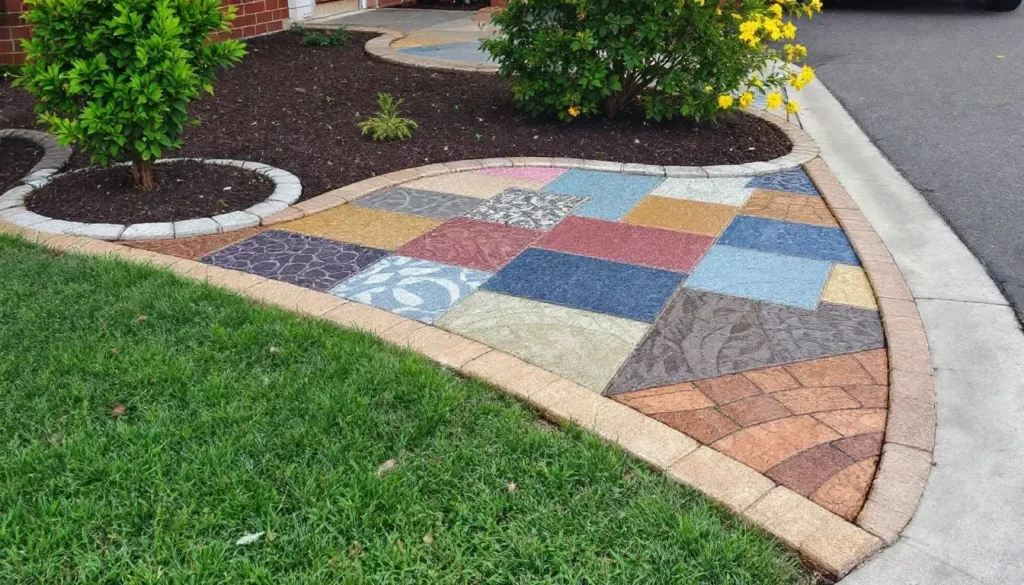
4. Installation of Concrete Curbing: DIY vs. Professional Services
a. Overview of the Concrete Curbing Installation Process
Installing concrete curbing involves several key steps to ensure a durable and visually appealing result:
- Site Preparation: The area is cleared, leveled, and marked for the curbing layout.
- Mixing Concrete: The concrete mixture is prepared with the appropriate consistency and additives for durability.
- Pouring and Shaping: Using specialized equipment like a curb machine, the concrete is poured and shaped into the desired style.
- Finishing Touches: Customizations such as stamping, coloring, or sealing are applied before the concrete sets.
A precise installation process is essential to achieve a professional-looking finish that lasts.
b. Tools and Materials Needed for DIY Projects
For homeowners considering a DIY approach to concrete curbing, the following tools and materials are typically required:
- Tools: Curb machine, trowels, edgers, mixing equipment, and level.
- Materials: Concrete mix, reinforcement additives, color pigments, and sealant.
While a DIY project can save costs, it requires time, effort, and skill to ensure proper installation. Mistakes can lead to uneven edges or weakened curbing, which may affect its durability.
c. Pros and Cons of DIY Installation Versus Hiring Professionals
DIY Installation:
- Pros: Lower upfront cost, flexibility in timing, and a sense of accomplishment.
- Cons: Requires specialized tools, significant labor, and a risk of errors that could compromise the quality and longevity of the curbing.
Professional Services:
- Pros: Experienced contractors deliver high-quality results with minimal effort on your part. They have access to advanced tools and techniques, ensuring long-lasting curbing.
- Cons: Higher cost compared to DIY, though often worth the investment for complex designs or large-scale projects.
d. Cost Considerations: Labor, Materials, and Long-Term Value
The cost of installing concrete curbing depends on several factors:
- Labor Costs: Professionals charge for their expertise, with prices varying based on project size and complexity.
- Material Costs: High-quality concrete, pigments, and sealants may increase expenses but improve durability and appearance.
- Long-Term Value: While professional installation costs more upfront, it often saves money over time by reducing the need for repairs or replacements.
Ultimately, the choice between DIY and professional services depends on your budget, skills, and the scale of the project. For intricate designs or large outdoor spaces, hiring a professional ensures a flawless result that enhances your landscape for years to come.

5. Maintenance and Longevity of Concrete Curbing
a. How to Clean and Maintain Concrete Curbing for Lasting Appeal
Concrete curbing is low-maintenance but benefits from regular care to keep it looking its best.
- Routine Cleaning: Use a mild detergent and water to remove dirt, stains, or debris. A soft-bristle brush can help with stubborn grime without damaging the surface.
- Seasonal Care: Check for buildup of leaves, mulch, or soil around the curbing to prevent staining or discoloration over time.
- Weed Prevention: Regularly remove weeds growing near or around the curbing to maintain its clean lines and prevent cracks.
With consistent cleaning, concrete curbing can retain its visual appeal and complement your outdoor space for years.
b. Tips for Sealing and Protecting Against Cracks or Fading
Sealing is a crucial step in preserving the longevity of concrete curbing.
- Initial Sealing: Apply a high-quality sealant shortly after installation to protect against moisture, UV rays, and stains.
- Re-Sealing: Repeat the sealing process every 2–3 years to maintain its protective barrier.
- Crack Prevention: Inspect the curbing periodically for small cracks and fill them with a concrete patching compound to prevent further damage.
Sealing not only enhances durability but also helps preserve the color and finish of decorative concrete curbing.
c. Common Repairs and How to Handle Them
Even with proper care, concrete curbing may occasionally require minor repairs:
- Hairline Cracks: Fill with a concrete repair compound to prevent spreading.
- Surface Chips: Use a concrete patch mix to smooth out damaged areas.
- Discoloration: Apply a stain or sealant to restore the original appearance of faded curbing.
Addressing issues promptly can prevent small problems from escalating into costly repairs and extend the life of your concrete curbing.
d. Why Professionally Installed Curbing Often Lasts Longer
Professional installation ensures the highest quality standards, contributing to the longevity of concrete curbing.
- Proper Base Preparation: Professionals ensure the foundation is compact and stable, reducing the risk of shifting or cracking.
- High-Quality Materials: Contractors use durable concrete mixes and advanced sealants for lasting performance.
- Expert Techniques: Professional installation minimizes errors, ensuring even finishes and secure placement.
While DIY projects can be rewarding, the expertise of a professional often translates into longer-lasting, better-looking concrete curbing.
With regular maintenance and occasional repairs, concrete curbing can remain a durable and attractive feature of your outdoor space for decades.
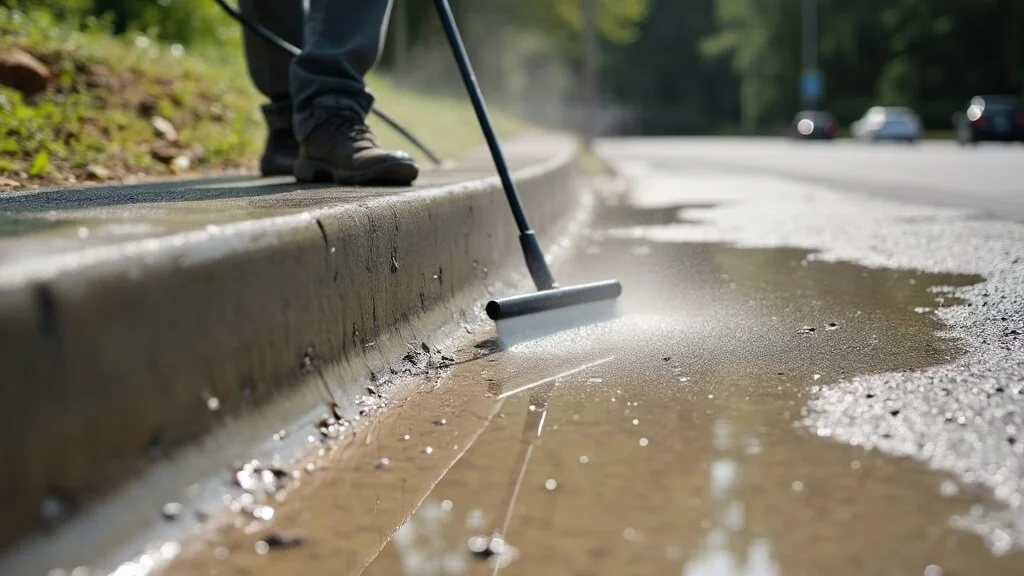
Conclusion
Concrete curbing is a versatile and durable solution for enhancing the beauty and functionality of outdoor spaces. Whether you’re looking to define garden beds, frame pathways, or add a polished edge to your driveway, concrete curbing provides a low-maintenance and customizable option that elevates curb appeal.
From its impressive durability and weather resistance to the endless design possibilities it offers, concrete curbing stands out as a worthwhile investment for both residential and commercial landscapes. Whether you choose a DIY installation or hire professional services, proper care and maintenance can ensure your concrete curbing remains a standout feature for years to come.
By understanding the benefits, types, installation process, and upkeep of concrete curbing, you can make informed decisions to create stunning and functional outdoor spaces. Transform your landscape with this long-lasting solution and enjoy the perfect blend of practicality and style.
